This post contains affiliate links, which means I may earn a commission if you purchase through those links (at no extra cost to you).
Learn How to Cut Cabbage like a professional for maximum speed and efficiency in the kitchen. Then add cabbage to soups, salads, and stir-fries or enjoy it in coleslaw or own its own.
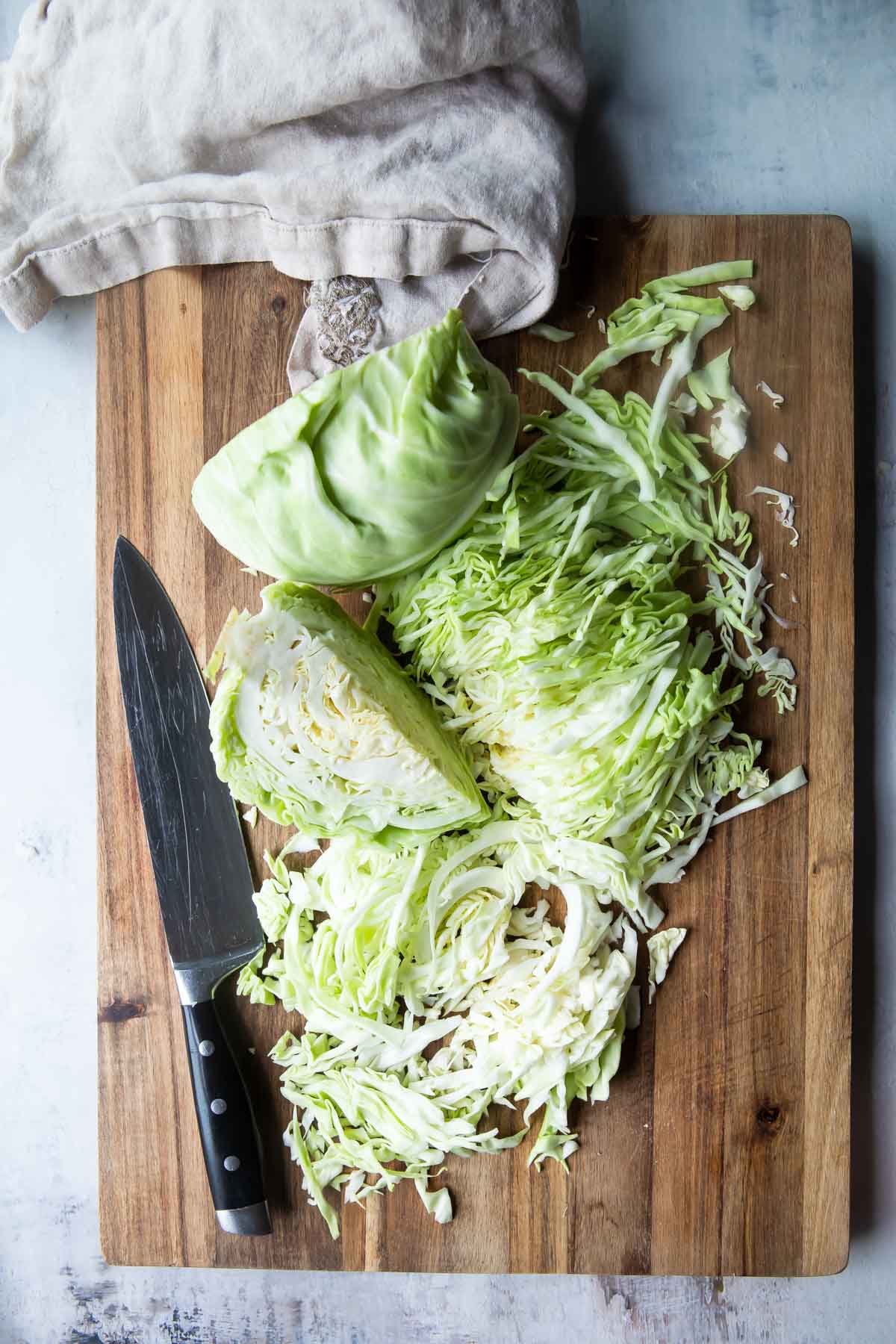
Meggan’s notes
One of the best parts of culinary school was learning how “the pros” cut every single fruit and vegetable ever. It was part of our Knife Skills education, and it has made all prep in my life easier ever since.
Prep cooks and chefs everywhere know how to methodically break down produce for maximum speed and efficiency because they do it every day. Once you learn the secrets, chopping veggies becomes a lot easier and more fun!
In this post, we’re tackling cabbage. I love cabbage because it’s hearty and nutritious, it’s great raw, cooked, and fermented (aka Sauerkraut or Kimchi), and it lasts a long time in the refrigerator. All good things! Let’s take the guesswork out of cutting up cabbage so you can get to eating it even faster.
Table of Contents
Recipe ingredients
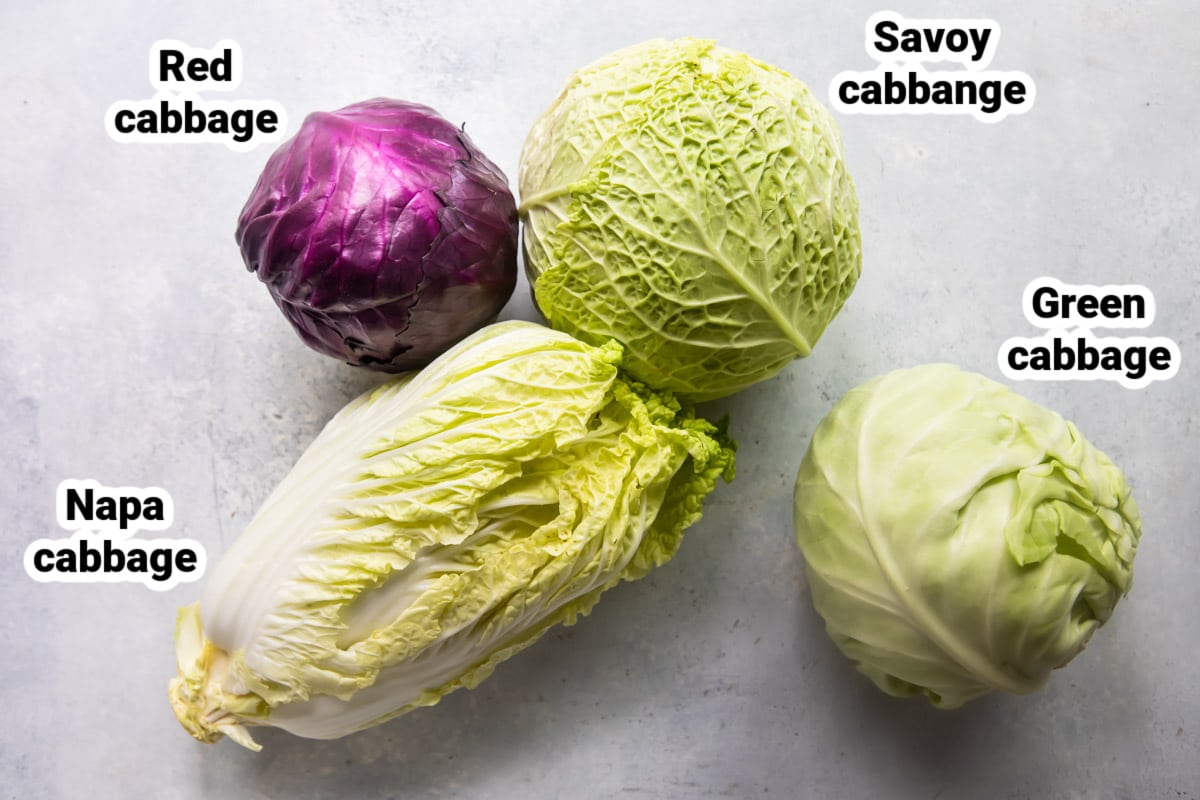
At a Glance: Here is a quick snapshot of what ingredients are in this recipe.
Please see the recipe card below for specific quantities.
Ingredient notes
The cabbage family is vast and broad, but here are some commonly found varieties that are often used interchangeably in recipes where sliced or shredded cabbage is called for.
- Green cabbage: The one that’s most commonly found at just about any supermarket. Green cabbage has smooth, darker green outer leaves, and paler green to white inner leaves.
- Red cabbage: This beautiful cabbage has vibrant purple-red leaves and white veins inside. Its shape and flavor is similar to green cabbage, but its color is infinitely more vibrant.
- Savoy cabbage: This round head of cabbage resembles green cabbage but has loosely packed, crinkly, yellow-green leaves and a very mild flavor.
- Napa cabbage: This oblong head of ruffled cabbage belongs to the Chinese cabbage varieties, which also include bok choy, baby bok choy, and choy sum. It has a slightly more tender texture than head cabbage, but it shreds well and is delicious raw in salads.
Step-by-step instructions
- Remove any damaged or browned outer leaves and rinse under cold water. Place the head of cabbage on the cutting board and cut the whole head into quarters straight down from the top of the crown to the stem using a large chef’s knife.
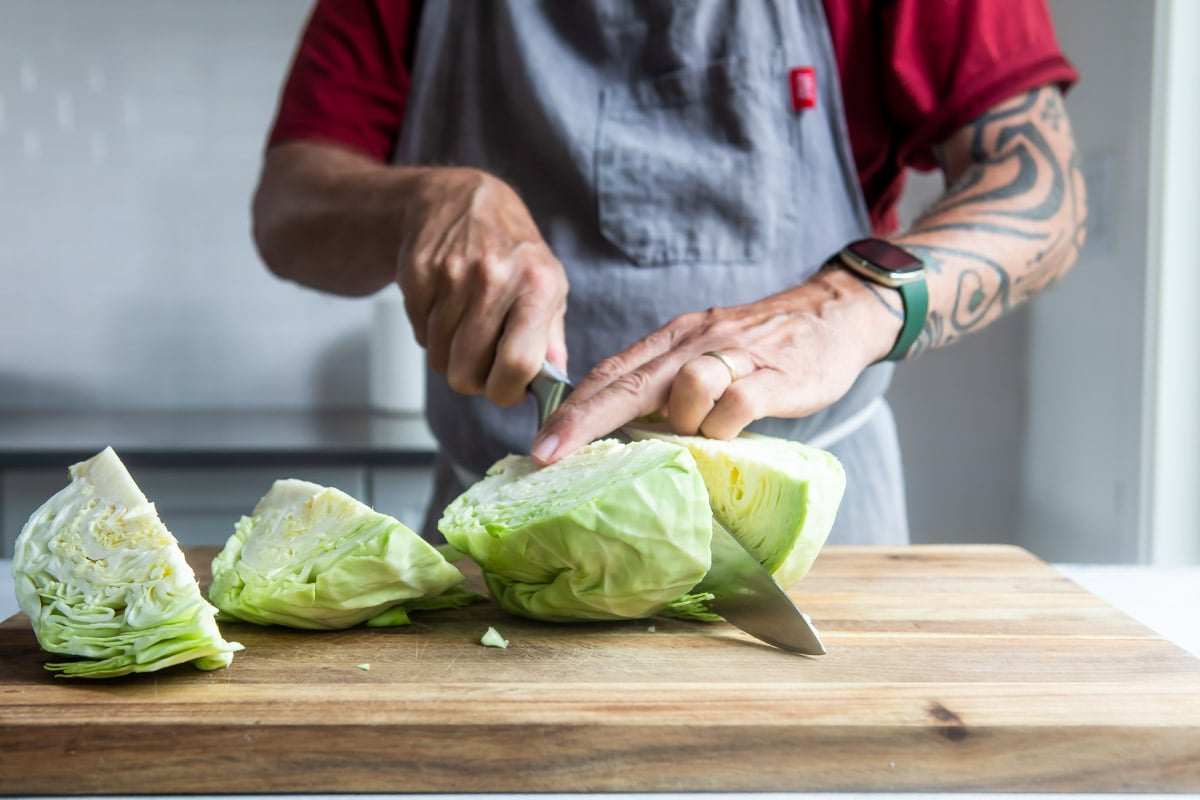
- With a knife, carefully cut out the core from each quarter.
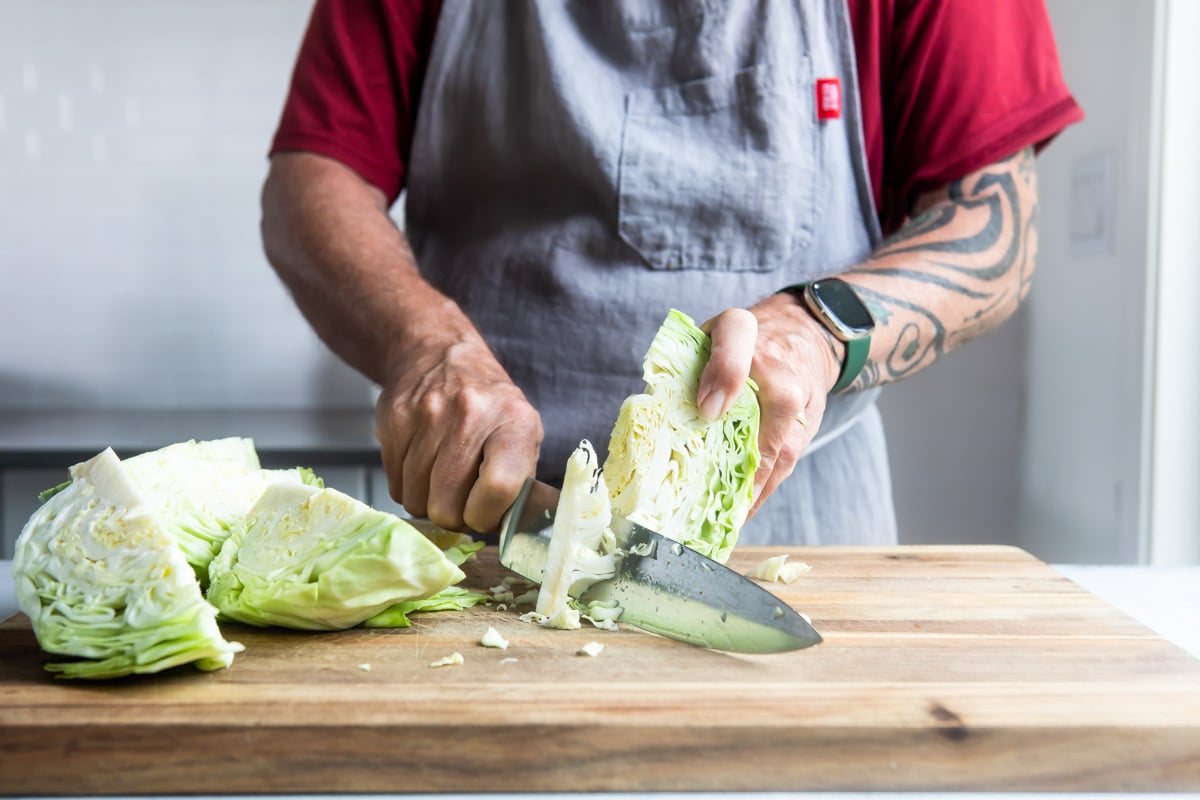
- Place the quarters, cut-side down, on the cutting board. Shred, slice, or chop according to your recipe instructions.
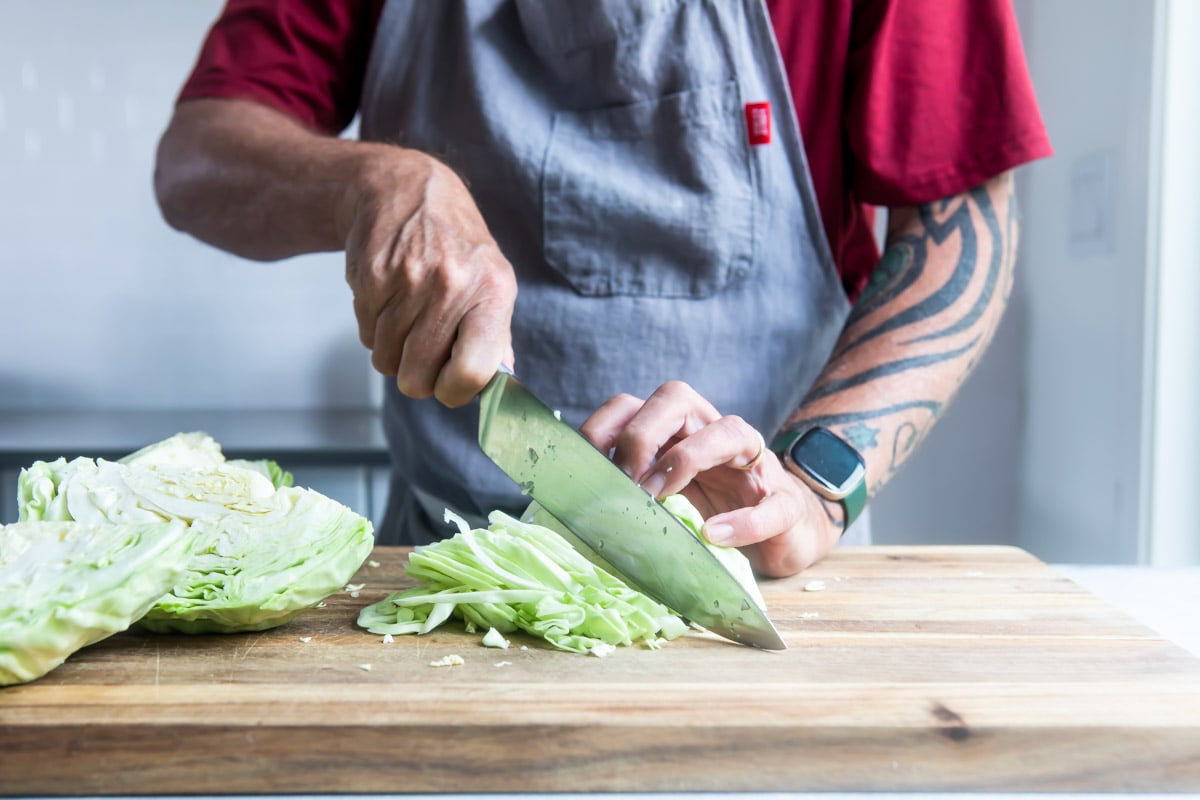
How to cut cabbage into wedges:
- If you’re braising the cabbage for a recipe like Corned Beef and Cabbage, or need cabbage in wedges for roasting or braising, you will want to leave the core and stem intact to hold the leaves together.
- Trim the tough end of the stem to leave a fresh cut, then make wedge-shaped slices through the core.
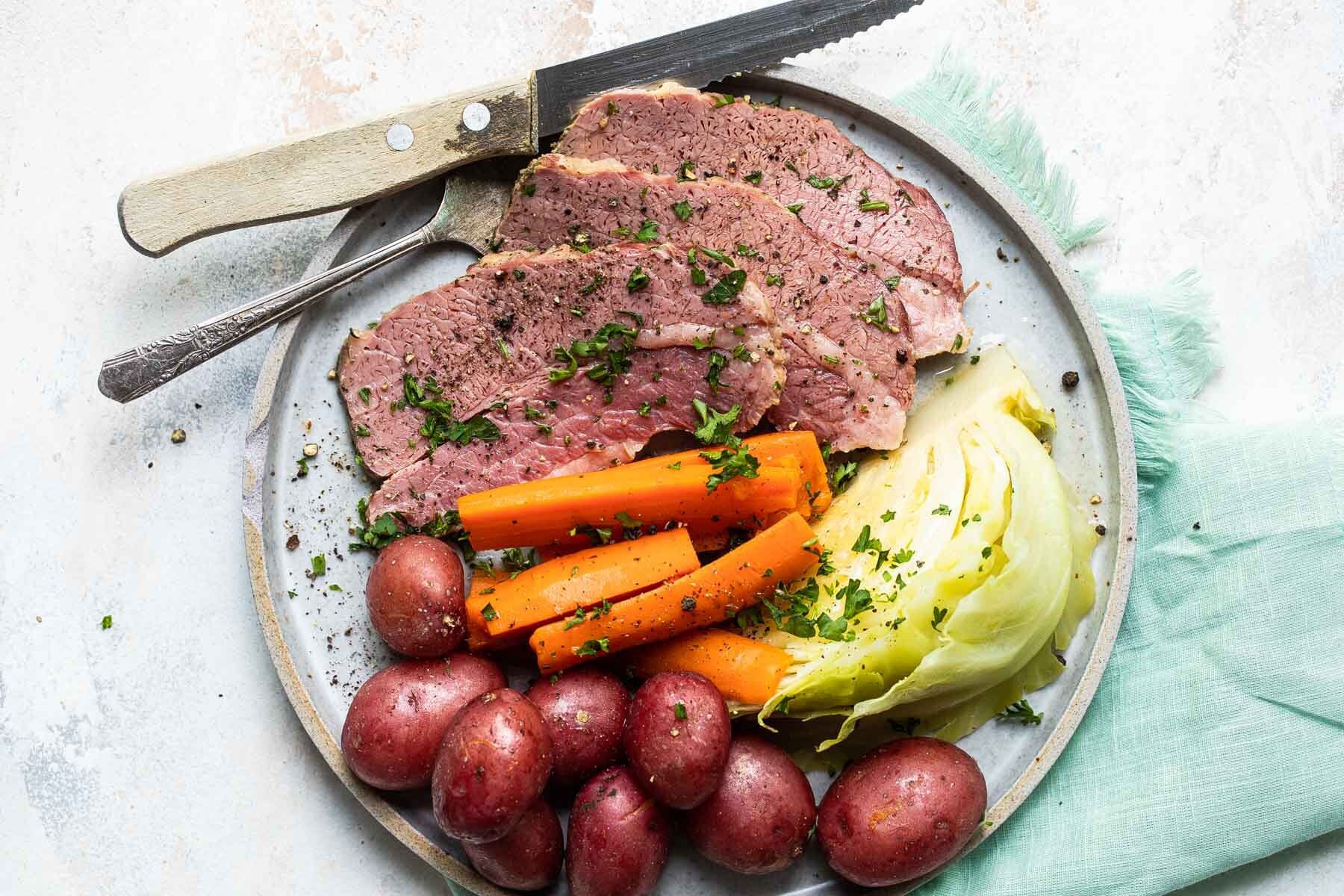
How to shred cabbage using a mandoline:
A mandoline is a handy kitchen device that slices, shreds, and juliennes firm vegetables like carrots, cucumbers, and potatoes efficiently. If you’re excited about using a mandoline to slice cabbage, it’s easy to do, as long as you’re careful. It also works well for making large quantities of shredded cabbage for parties and big groups.
- First, place your mandoline on a sturdy work surface and set the flat blade to the thickness you prefer. There should be a knob or dial that adjusts the blade’s thickness. Most likely, you will need to cut the cabbage in quarters to fit on the cutting surface of the mandoline.
- Very carefully, using the guard that came with the mandoline to protect your fingers, move the cabbage wedge across the blade in one clean motion, from one end of the vegetable to the other. As you do this, the sliced cabbage will fall under the mandoline. You can transfer it to a bowl as you work.
- For safety’s sake, don’t feel compelled to slice the entire wedge on the mandoline. When it gets close to the end, slice the remainder using a chef’s knife and start again with a new wedge.
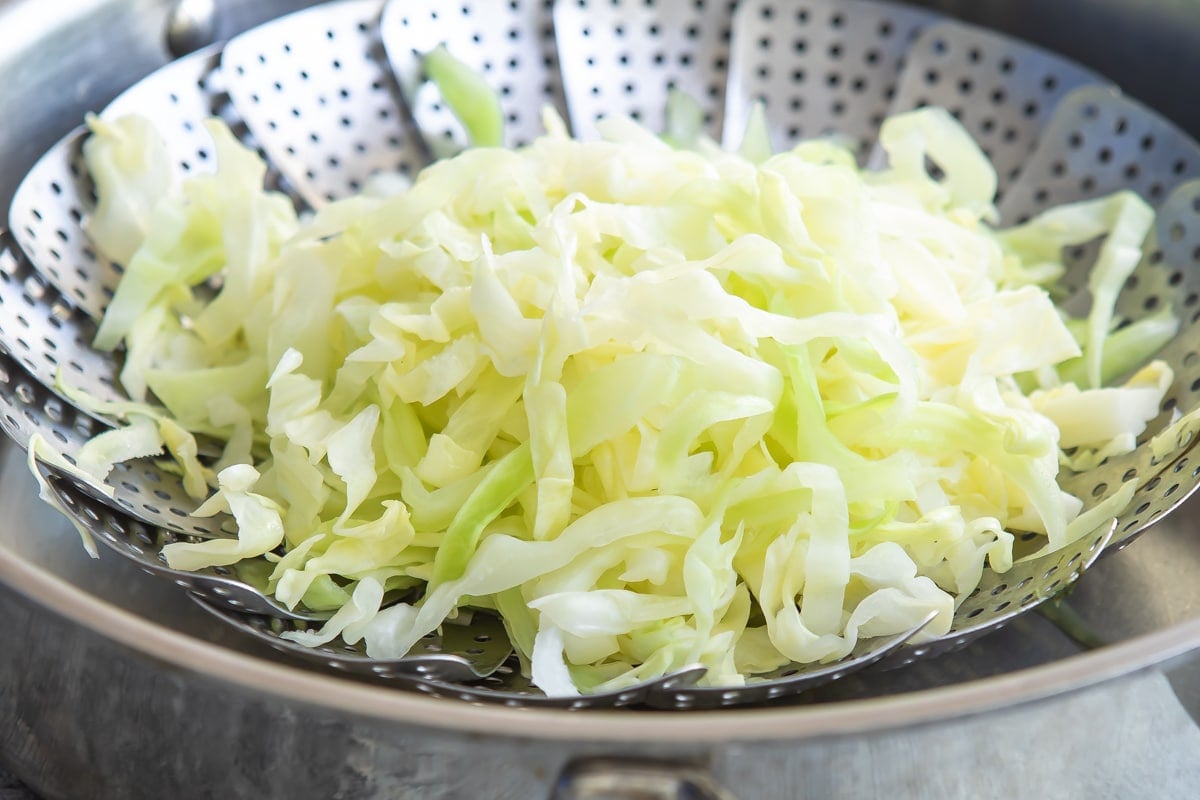
Recipe tips and variations
- Yield: 1 pound cabbage = about 4 cups shredded cabbage.
- Storage: Store a whole head of cabbage in a plastic bag in your crisper drawer for up to 2 months. Store a cut head of cabbage the same way for 3 to 4 days. For shredded bags of coleslaw from the store, follow the expiration date or your own observations (if it looks bad, toss it).
- Coleslaw: Cabbage is a crucial component in KFC Copycat Coleslaw, Apple Coleslaw, or Fish Tacos with Slaw.
- Pan-fried: I grew up on cabbage sautéd in butter with garlic and onion, and it was delicious!
- Stir-fries: Cabbage is an excellent addition to Fried Rice or any stir-fried vegetable medley. For even more flavor, add a splash of Teriyaki Sauce.
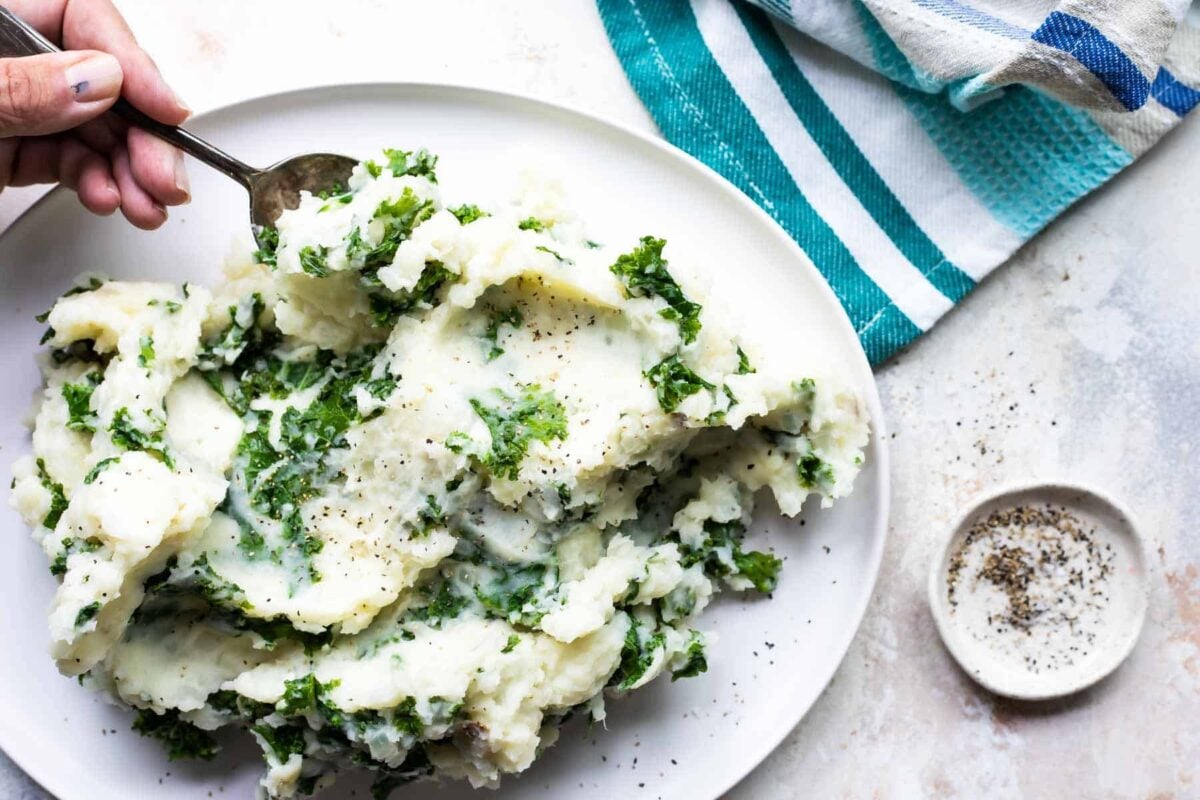
Frequently Asked Questions
No matter what type of cabbage you pick, it’s going to be really, really good for you. After all, it’s in the brassica family, which includes broccoli, cauliflower, kohlrabi, and kale.
A one-cup serving of cabbage has a low, low 22 calories, but is loaded with vitamins and minerals: folate, vitamin C, vitamin K, potassium, magnesium, and calcium. Cabbage is also packed with digestion-boosting fiber, anti-oxidants, and phytosterols (which may aid in lower cholesterol).
If you need to decide between red or green, red cabbage is higher in vitamin C than green; one cup of red cabbage contains 85% of RDI of vitamin C.
Store a whole, uncut head of cabbage in a plastic bag in your crisper drawer for up to 2 months. Store a partially cut head of cabbage the same way for 3 to 4 days. For shredded bags of coleslaw from the store, follow the expiration date or your own observations (if it looks bad, toss it).
Put your cabbage to work
Stews and Soups
Cabbage Soup
Salad Recipes
Chopped Cabbage Salad
Casserole Recipes
Stuffed Cabbage Rolls
German Recipes
Braised Red Cabbage
Join Us
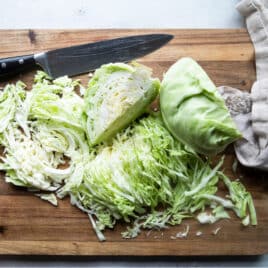
How to Cut Cabbage
Ingredients
- 1 head cabbage (about 2 pounds, see note 1)
Instructions
- Remove any damaged or browned outer leaves and rinse under cold water. Place the head of cabbage on the cutting board and cut the whole head into quarters straight down from the top of the crown to the stem using a large chef’s knife.
- With a knife, carefully cut out the core from each quarter. Place the quarters, cut-side down, on the cutting board. Shred, slice, or chop according to your recipe instructions.
Notes
- Yield: 1 pound cabbage = about 4 cups shredded cabbage.
- Storage: Store a whole head of cabbage in a plastic bag in your crisper drawer for up to 2 months. Store a cut head of cabbage the same way for 3 to 4 days. For shredded bags of coleslaw from the store, follow the expiration date or your own observations (if it looks bad, toss it).
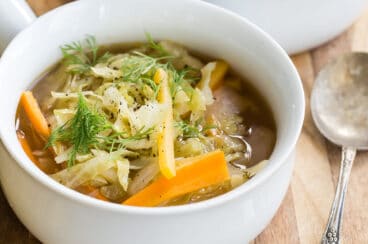
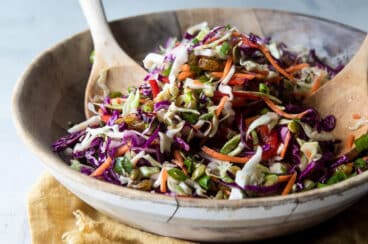
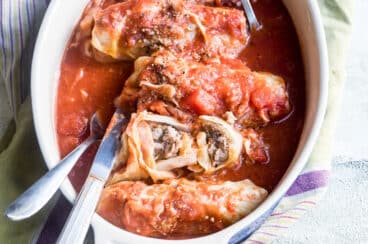
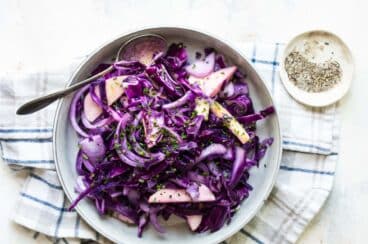
Thanks for your great recipes and instruction. After quartering and coring, do you slice the cabbage quarter long way or crossway. Thanks
Hi David, long way so the leaves stay together. Please let me know if you have any other questions!
Great job of explaining! Your the best !, thankyou
Thank you Mike! – Meggan
After removing the outside core of the cabbage, can I leave the inside of the core holding the head of the cabbage if I don’t want to throw it away? Is it edible and nutriuous?
Please can you also explain how to cook and use/eat beetroot as food?
Hi Bob, the center of the cabbage is edible, less tender than the leaves, and more radish like. While not great raw for recipes like coleslaw where it is not cooked, it can be sautéed and cooked down. Beets are delicious, and are great roasted or eaten raw. Here are two great ways to have them. Enjoy! – Meggan https://cash-surge.live/how-to-roast-beets/%3C/a%3E https://cash-surge.live/beet-salad-with-lemon-thyme-vinaigrette/%3C/a%3E%3C/p%3E
Thank you. I have cooked cabbage for years never reaĺly knowing how to cut. My cabbage for dinner will be cut up great now. Glad i found this.
Thanks Sarah, happy to help! – Meggan
Loved it .VERY helpful . I never knew the right way.